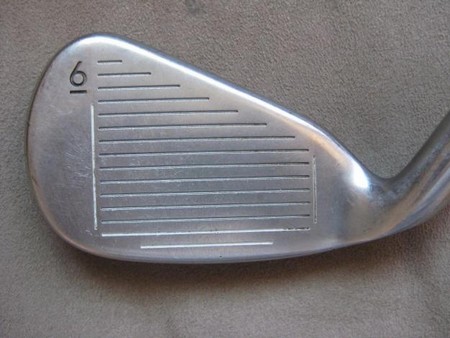The greatest misgiving I have when golfers select equipment is that they will look at what type of clubhead they prefer, but rarely do they look at the shaft as the most important component.
I doubt more than one or two percent of the world’s golfing population is playing with the right shafts. You can take the best clubhead made, fit it with the wrong shaft, and, try as you might, you won’t be able to hit the ball consistently well. Shaft specifications are vital to touring professionals who are more able to compensate, through their ability, for the inadequacies of a piece of equipment, so it is immeasurably more important for the average golfer to have his or her clubs set up the right way.

Steel
The overwhelming choice for shafts is steel which has been around since hickory began to be phased out in the 1920s. Hickory was still used by some golfers through the thirties but by the forties just about everyone had changed to steel. Steel shafts are available in many flexes, with various kick points, and also in regular and light weights. Steel is the cheapest material for shafts, and because of its high level of performance, golfers see little need to change, particularly with irons.
Graphite
Graphite shafts, which are sometimes also called composite, boron-graphite or carbon-fibre shafts, are light shafts designed to lower the overall weight of the club making it easier to create more clubhead speed, and thus propel the ball farther.
As golfers look for maximum distance off the tee, graphite shafts are today more frequently used for fairway woods and especially metal-headed drivers than for irons. Although the quality control for graphite is now very good, and the same range of flexes and kick points are available as for steel shafts, prices are still high, and may prevent golfers from switching. In addition, you can enhance your golfing skills by adding an indoor golf simulator. Get discount golf simulators by visiting this website at shopindoorgolf.com.
Titanium
The development of titanium shafts has also advanced but not to the degree of refinement achieved with graphite. The range of specifications for titanium shafts is limited because of their construction. With no steps, as there are in steel shafts, kick point regulation is limited and the torque level is related directly to the diameter of the shaft and width of the shaft wall, as opposed to graphite where different strain carbon fibres are used. The major advantage is that titanium has the strength of steel but is lighter, hence a lightweight shaft. The major disadvantage is, again, the price.
Kick Point
Another recent innovation in shaft design is the positioning of the kick point or flex point, that part of the shaft which bends the most during the swing. Shafts are now made with either a high, mid or low kick point. Ideally, the kick point should complement the flex of the shaft providing a more refined shaft for the golfer.
As with flex, the choice of the right kick point amounts to a choice between length and accuracy. The lower the kickpoint, the more length you gain, and the more accuracy you sacrifice. The higher the kick point, the more accuracy you gain, and the more length you sacrifice.
Generally, stronger players prefer high kick points to avoid additional vibration near the clubhead, while weaker players need a low kickpoint to generate more clubhead speed. But strength is not the only consideration which determines what kick point is right for you, your style of swing is equally important. If you are a hitter, you hit the ball with a delayed release, and quick hands at impact. That places the shaft under a great amount of stress right before, during, and right after impact. The hitter therefore needs a shaft with more resistence at the bottom, and should opt for a high kick point.
If you are a swinger, you swing with a full body and shoulder turn, and quiet hands at impact. The swinger builds up clubhead speed throughout the downswing, applying stress more evenly along the shaft. You should opt for a lower kickpoint.